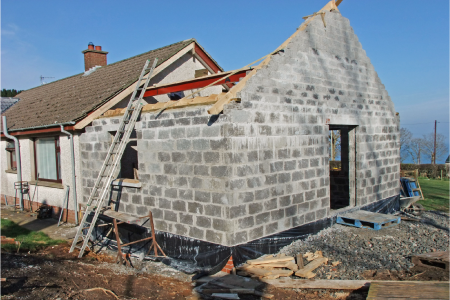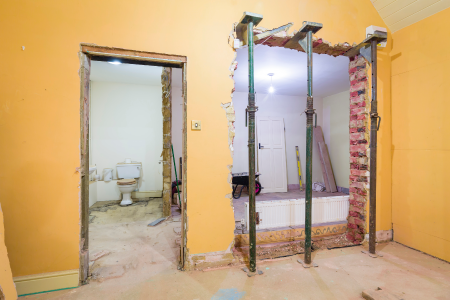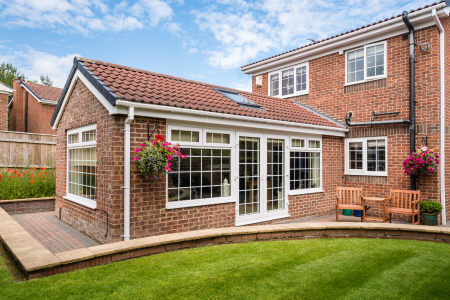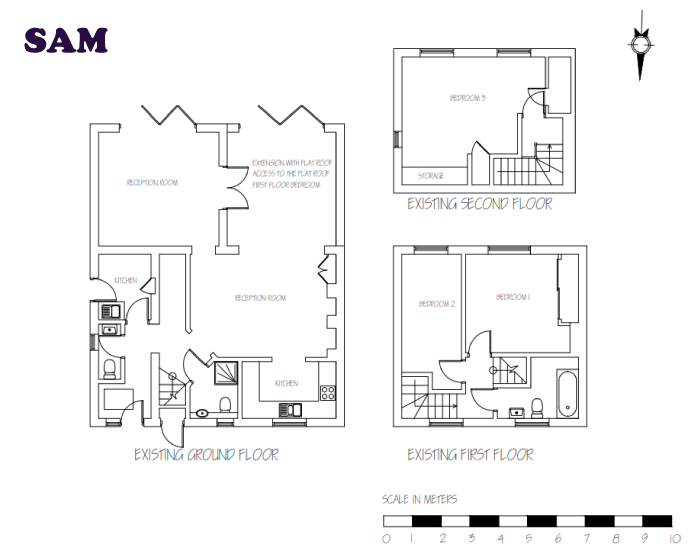Do I Need a Structural Engineer for My Extension?
Home extensions involve structurally altering the load-bearing external walls of your home and constructing a new living space, which needs to be safe, warm, practical, and strong enough to support the weight of any new roofs, glazing, and furniture.
Strictly speaking, you don't have to use a structural engineer, so long as the builder you use is competent enough to handle these complexities of the project. Larger-scale projects may use an architect to do the initial drawings for planning and building regs application, a structural engineer to do the load calculations and detailed drawings for the builder to then complete the extension.
We'll run through what structural engineers do, the benefits of working with them, and when you do and don't need one for your extension.
What does a structural engineer do?
Structural engineers are the unsung heroes of construction. They ensure that buildings and structures are safe and stable. When it comes to home extensions, their role is important.
Most people either instruct an architect, builder, or structural engineer to do the initial drawings for planning permission and a structural engineer will do the detailed drawings the builder uses to complete the extension.
Structural assessment
Engineers evaluate the building's foundation, walls, and roof to determine its load-bearing capacity and potential structural limitations. They consider the building's age, previous and new materials, and local soil conditions.
Extension design
Based on the assessment, they create detailed plans for the new structure, considering the extension's size, shape, and location. They design load-bearing elements like beams, columns, and foundations to support the extension safely and to make sure it's integrated with the existing building.
Load calculations
Engineers determine the weight distribution of the extension and how much weight your home can safely support. They calculate the loads (materials, people, furniture etc.) on the existing structure and design the extension to withstand them to prevent structural issues from arising in the future.
Material selection
After calculating the loads and understanding the structural requirements, engineers recommend suitable materials for the extension based on strength, durability, and cost-effectiveness. If you're opting for a lighter tile roof, they will likely calculate the loads for a simple timber frame but if you want a heavy roof to support large skylights and a roof-top terrace, rolled steel joists might be their preferred choice. Either way, they will calculate the minimum required size and the distance between supports.
Structural drawings
These detailed blueprints are essential for builders and contractors to follow during construction. They also provide a visual 'road map', allowing the homeowner to compare and track progress along the way to manage their renovation project.
Expert advice
From foundation design to roof support, engineers provide valuable guidance throughout your home extension project. An impact assessment is carried out for every project to find out if it could cause cracking to walls from foundation sizing or construction techniques used. You should also expect that your structural engineer factors in the implications of their designs and calculations to see how it affects the overall budget and how the structure's shape combines with the original property.
The difference between a structural engineer and an architect
While often confused, structural engineers and architects have different roles in the construction process.
Architects focus on the overall design and aesthetics of a building. They create floor plans, elevations, and perspectives to visualise the project. They consider space, functionality, and style.
Structural engineers specialise in the building's structural integrity. Their focus is on ensuring the building is safe and stable. They calculate loads, design support structures, and specify materials.
In essence, architects create the vision, while structural engineers bring it to life safely and efficiently. Both professionals work collaboratively to deliver successful projects.
Pros and cons of using a structural engineer
Pros
- Safety and compliance: Engineers help ensure your extension complies with building regulations. Breaches can delay the project and render it dangerous and illegal at worst.
- Problem prevention: They consider the potential impact of the project including beam deflection or the overloading of existing walls or foundations.
- Peace of mind: A structural engineer will use their experience to make your extension structurally sound and built to last, meaning you're reassured for the future.
- Increased property value: A well-designed extension could significantly boost your property's market value and bring you more money in if you were to sell in the future.
- Streamlined process: A structural engineer's expert guidance for your home extension project will allow you to benefit from a smoother process.
- Insurance: All of SAM Conveyancing's structural engineers carry professional indemnity insurance.
Cons
- Initial cost: The upfront fees involved in hiring an engineer will add to the overall budget of the project and might not have been originally factored into your initial plans.
- Potential delays: Involving an engineer could be seen as a roadblock to project completion, as they are known for wanting to provide quality work which complies with all regulations.
While there are initial costs and potential delays, the long-term benefits of working with a structural engineer often outweigh these considerations, especially for complex or large-scale extensions.



When might you not need a structural engineer?
While it's generally recommended to consult a structural engineer for most home extensions, there are certain circumstances where it might not be necessary.
- Minor internal alterations: Small-scale projects like removing non-load-bearing walls or replacing windows typically don't require a structural engineer.
- Standard extensions in modern properties: Newer homes often follow standardised building practices, reducing the need for structural calculations. However, make sure to verify this work with a local building control officer.
- Experienced builders: In some cases, builders with proven expertise in extensions might be able to handle the structural aspects without external consultation.
However, please note that these are general guidelines. Each project is unique, and consulting with a professional is always advisable to avoid issues and ensure the safety of your property.
Planning permission and building regulations for a home extension
Planning permission focuses on how your extension will look and its impact on the local area. You will need detailed drawings from a structural engineer, architect, or competent builder to submit them for planning approval.
Failure to comply with building regulations approval is a criminal offence which can result in death, injury, devaluing your property, rendering it unmortgageable and severely limiting your resale options. You may be charged criminally, ordered to completely undo the works and pay an unlimited fine.
Once permission is granted, a structural engineer will create detailed plans with measurements for the builder. Our structural engineer can help with any size of project from a single-storey extension to a full refurbishment.
Our fees are competitive and our structural engineers all carry indemnity insurance.
Structural engineer costs for a home extension
To correctly budget for your home extension, you need to understand how much a structural engineer could cost. While there's no one-size-fits-all answer, here's a breakdown to help you estimate:
- Average structural engineer cost: For a standard single-storey extension, you can expect to pay between £1,000 and £2,500 for structural engineering services. More complex projects, such as two-storey extensions or loft conversions, can range from £3,000 to £5,000 or even more.
- Hourly rates: Some engineers charge by the hour, typically between £100 and £200. The total cost will depend on the time spent on your project.
- Fixed fees: Some engineers offer fixed-price packages for specific types of extensions. This can provide budget certainty.
- Additional costs: Factor in potential extra charges for site visits, calculations, and building regulation submissions.
Remember: These are estimates, and the actual cost can vary based on your project's specific requirements and the engineer's fees. Project complexity, the engineer's location and experience, and your soil conditions will all affect the price.
An example of a structural engineer's drawings or plans

Working with a structural engineer for your home extension
Collaborating effectively with a structural engineer is essential for a successful home extension. Here are some tips:
- Establish open dialogue with your engineer, clearly explaining your extension plans, budget, and timeline.
- Choose the right structural engineer experienced in residential extensions and with a good reputation.
- Discuss fees upfront and agree on payment terms. Consider additional costs for site visits or revisions.
- Set realistic timelines for the engineering process and factor them into your overall extension schedule.
- Stay involved by attending site visits and discussing any changes or questions with your engineer.
Jack is our resident Content Writer with a wealth of experience in Marketing, Content, and Film. If you need anything written or proof-read at a rapid speed and high quality, he's your guy.
Caragh is an excellent writer and copy editor of books, news articles and editorials. She has written extensively for SAM for a variety of conveyancing, survey, property law and mortgage-related articles.









